Natural history museums: A frontier for discovery, in danger
Kristofer Helgen has been called an "animal discovery machine." He's discovered nearly 100 mammal species in the course of his career
Listen-
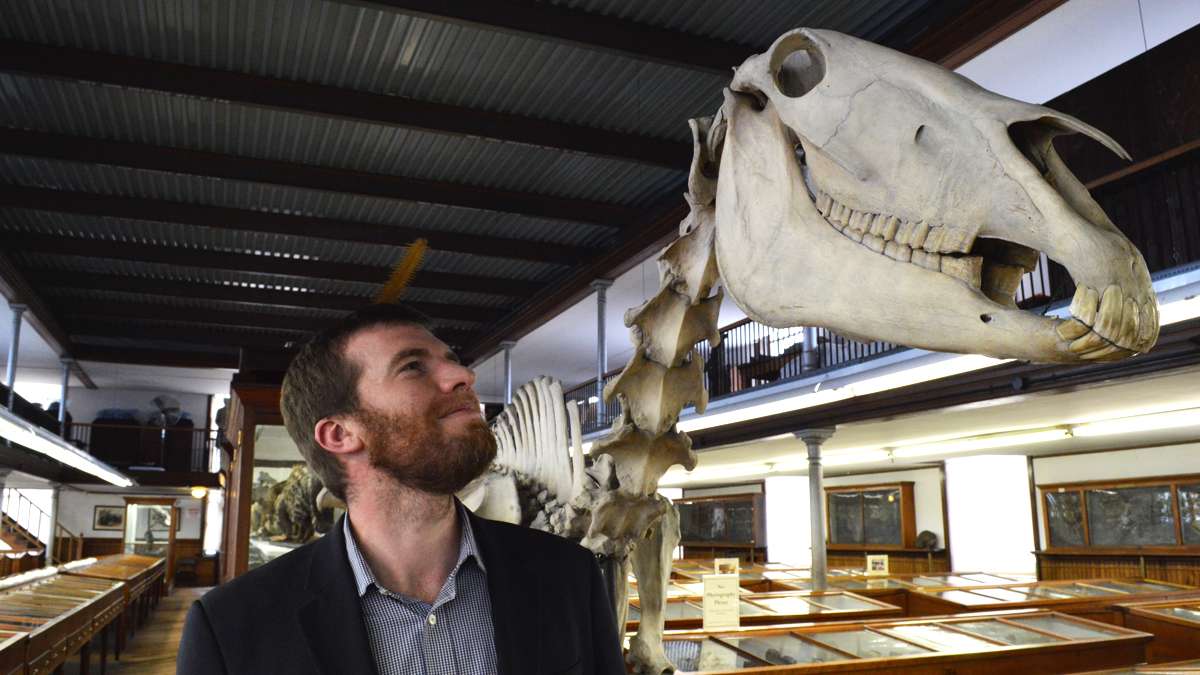
Kristofer Helgen, Curator of Mammals at the Smithsonian's National Museum of Natural History, has discovered new species in old museums. Here, he visits the Wagner Free Institute of Science. (Paige Pfleger/WHYY)
-
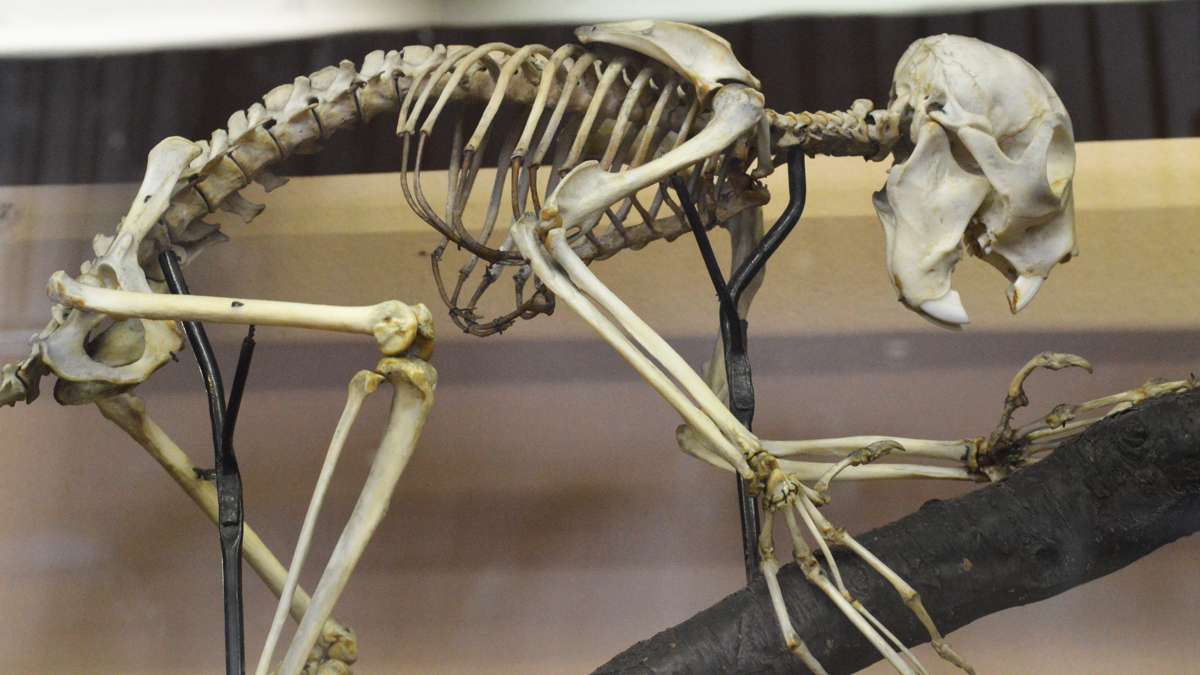
A skeleton on display at the Wagner Free Institute of Science. (Paige Pfleger/WHYY)
-
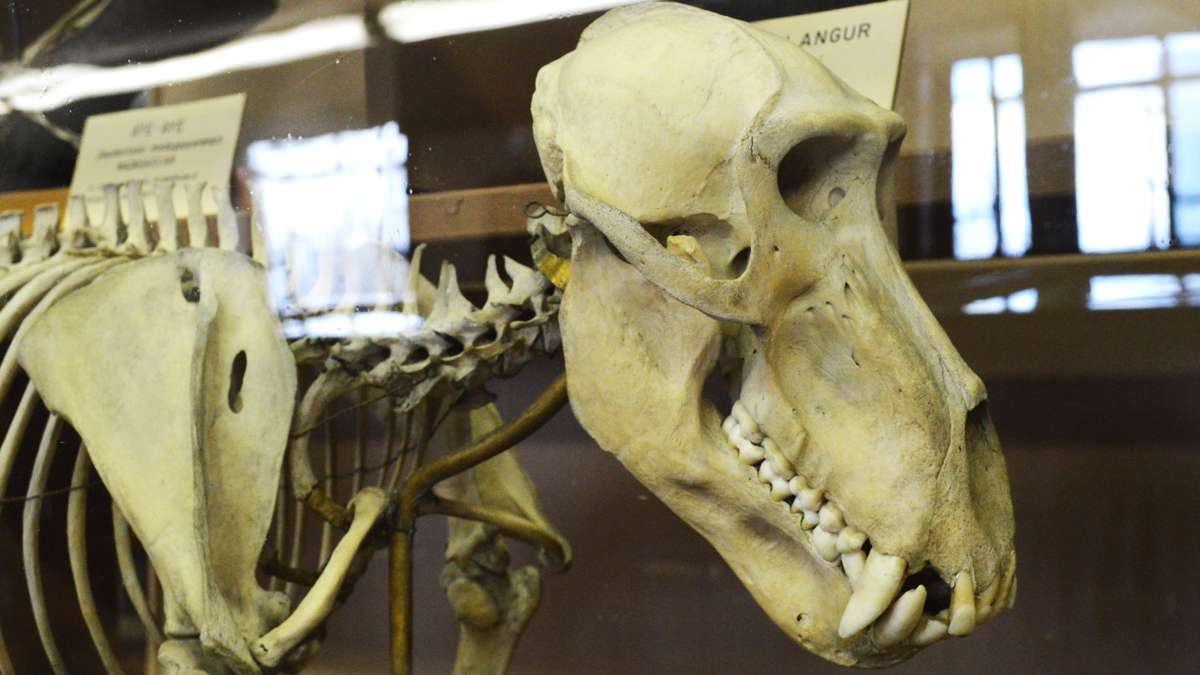
A specimen in the Wagner Free Institute of Science in Philadelphia. (Paige Pfleger/WHYY)
-
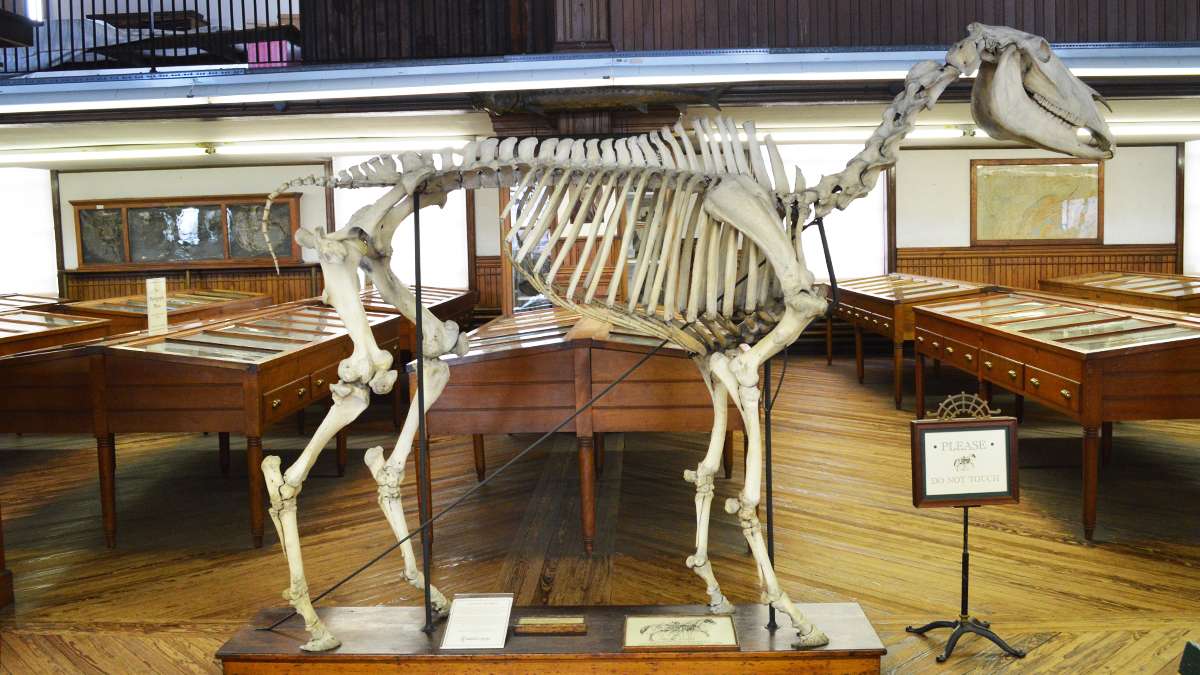
A horse skeleton stands amongst display cases at the Wagner Free Institute of Science. (Paige Pfleger/WHYY)
-
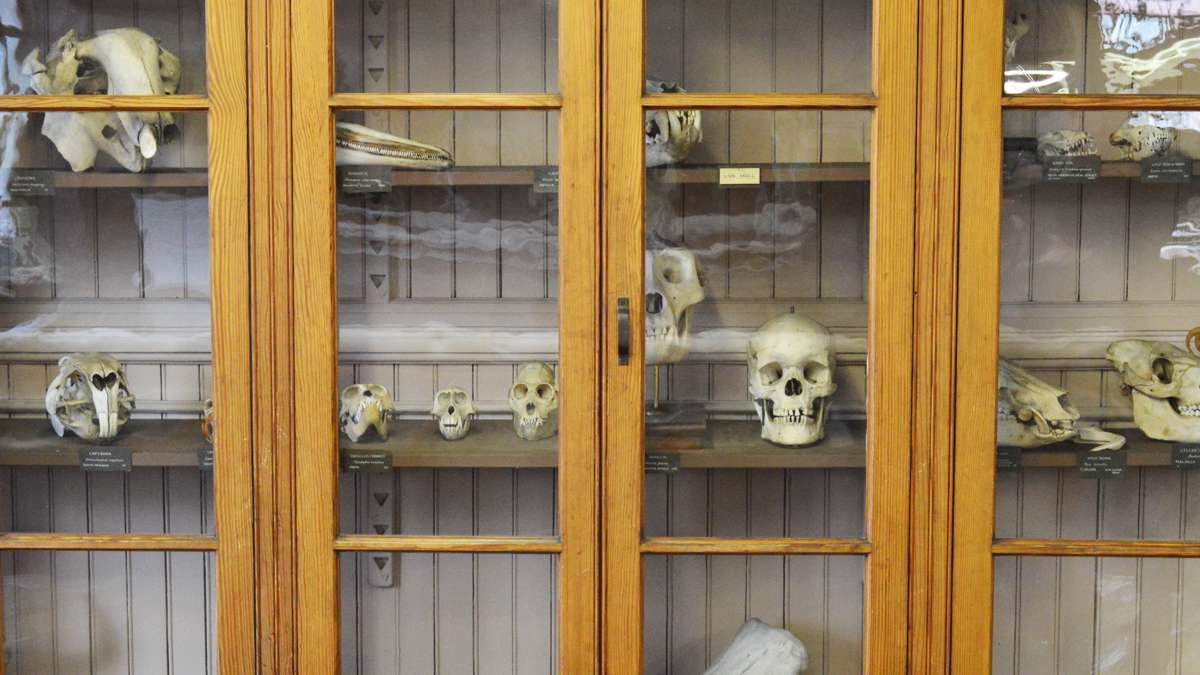
A specimen case, full of various skulls, at the Wagner Free Institute of Science. (Paige Pfleger/WHYY)
-
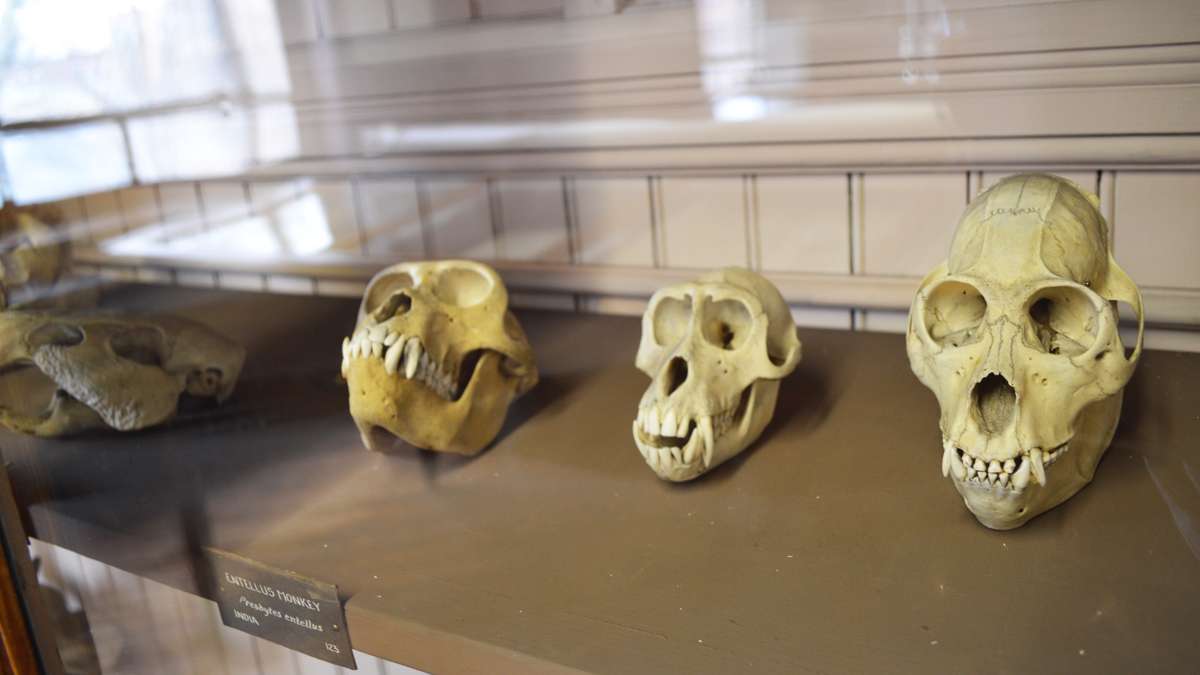
Skulls in a display case at the Wagner Free Institute of Science. (Paige Pfleger/WHYY)
-
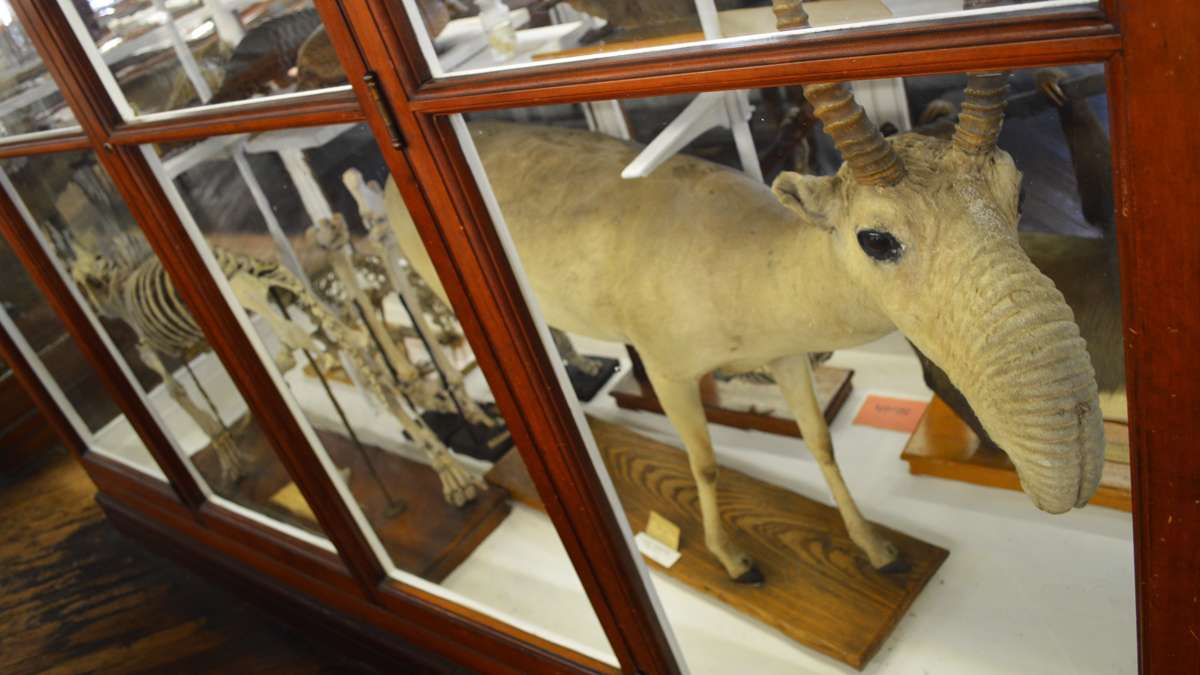
The Wagner Institute's 19th century exhibit hall houses a collection of natural history specimens, including mounted birds and mammals, fossils, rocks, minerals, insects, shells, dinosaur bones and more. (Paige Pfleger/WHYY)
-
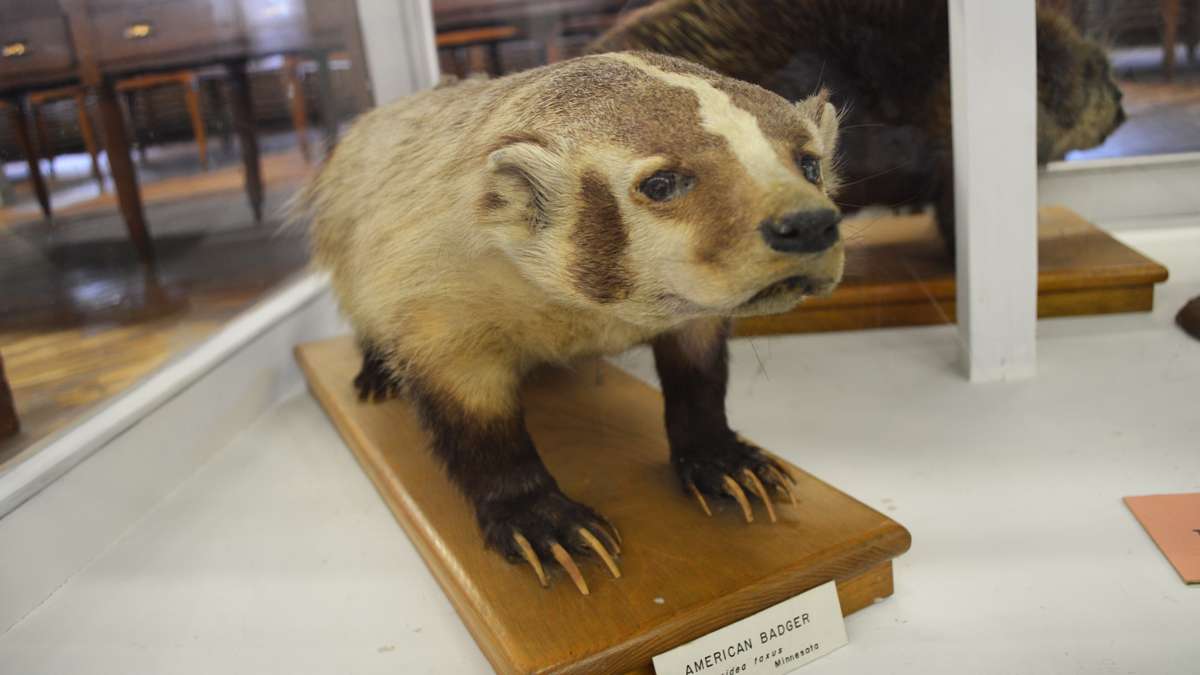
A stuffed American badger on display at the Wagner Free Institute of Science. (Paige Pfleger/WHYY)
-
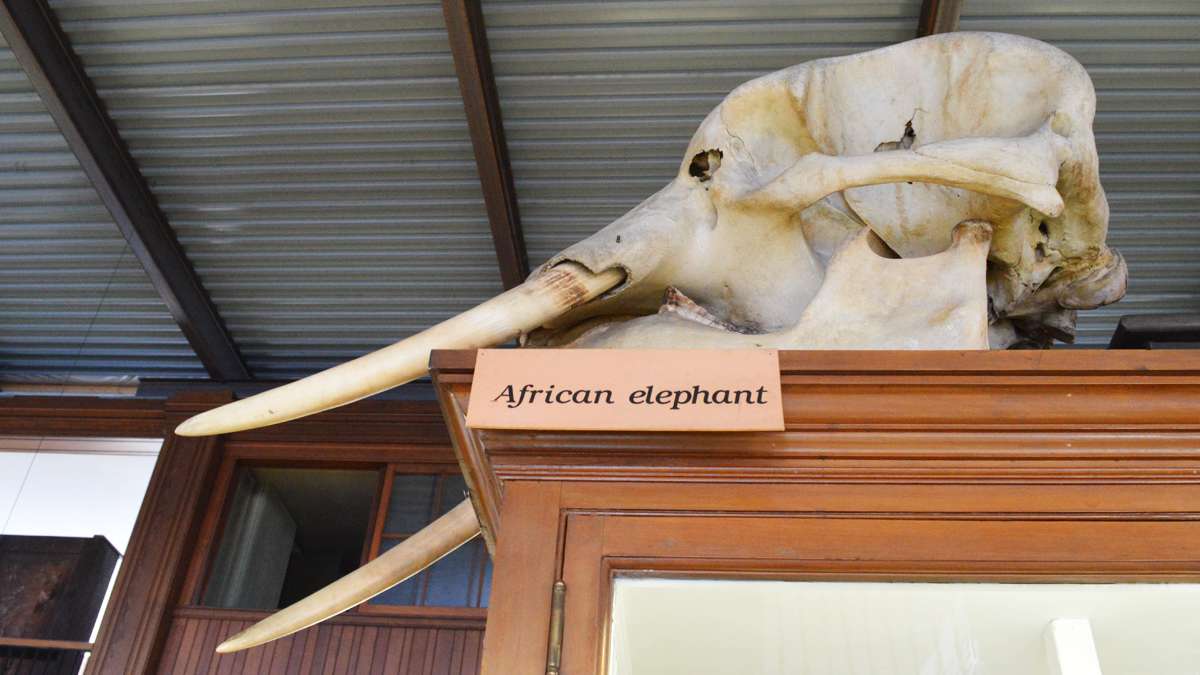
A huge African elephant skull rests on top of a display case at the Wagner Free Institute of Science. (Paige Pfleger/WHYY)
When you think about scientists discovering a new species, you might imagine someone in Indiana Jones gear, out in the middle of the Amazon sifting through the brush, or a scuba-clad diver in the furthest depths of the ocean.
Whatever you picture, it probably looks nothing like how Kristofer Helgen discovered a new species of bat.
He was at the Academy of Natural Science in Philadelphia a few years ago, and went behind the scenes to see the collection. Within the first hour of wading through rows upon rows of cabinets, housing more than 20 million specimens, Helgen found a skull of a new species of flying fox.
“I looked closer, I looked at the details, the tags,” he says, “This specimen had been in the Academy since 1856.”
Helgen has been called an “animal discovery machine“. His official title is Curator of Mammals at the Smithsonian’s National Museum of Natural History. He’s discovered nearly 100 mammal species in the course of his career, including the Olinguito — the first carnivorous mammal species to be discovered in more that 35 years. He came across that species in Chicago’s field museum.
“We can use the most cutting edge modern methods to study the oldest material that’s here,” Helgen explains. “It’s a place where we really need a lot more boots on the ground, we need a lot of young scientists in the battle to try to understand this basic question — how rich is life on earth?”
Helgen recently gave a lecture on this issue at a historic location for science education, the Wagner Free Institute of Science of Philadelphia, which was established in 1855. Despite their age, Helgen says, museums are a new frontier for discovery — discovery that wouldn’t be possible without the massive specimen collections at natural science and history museums around the country.
Those museums and their specimens might be in danger, though. As of mid-March, the U.S. National Science Foundation suspended the program that helps fund these museums. It’s called the Collections in Support of Biological Research Program, and it was put on hiatus because of budget restructuring, explains Muriel Poston, division director for the Division of Biological Infrastructure.
“I was quite surprised about this hiatus on funding for museum collections,” says Hopi Hoekstra, curator of mammals at Harvard’s museum of comparative zoology. “Museums are really more important now than they have ever been.”
Even if this is only a single year hiatus, Hoekstra explains that these funds are vital, especially for small university museums which rely on them to maintain collections, or pay people to maintain the collections.
“In one sense, it’s definitely slowing down science, and in the most extreme sense, some of these collections could really be in danger,” she says.
In some ways, the CSBR money was a rainy day fund, sometimes used when a museum was struggling, explained Prosanta Chakrabarty, the curator of fishes at the Louisiana State University Museum of Natural Sciences.
“These grants help people secure the most important root of all their work, which is the materials, the samples of animals,” Chakrabarty says. “Without these grants, sometimes you have to send them away or donate them to another museum that does have that infrastructure.”
His museum got a grant before the hiatus, but other museums might not have been so lucky.
“NSF has been very good to the natural history museum community, and we trust them, but we also are cautioning them to keep this hiatus short,” Chakrabarty says.
Otherwise, some museums might lose their collections, or have to close their doors for good.
WHYY is your source for fact-based, in-depth journalism and information. As a nonprofit organization, we rely on financial support from readers like you. Please give today.



